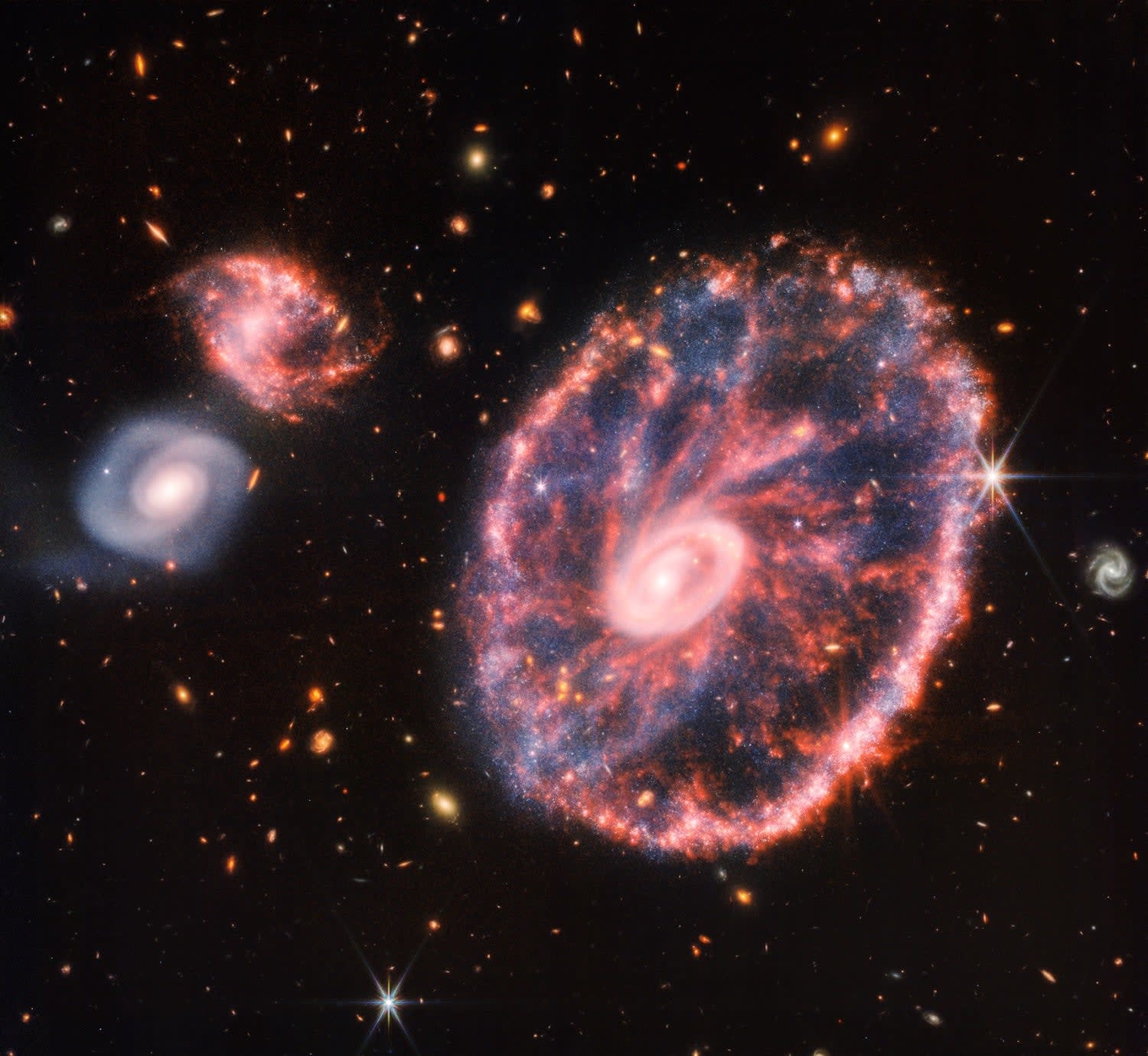
JWST Reveals Galactic Birth Secrets

Gazing up at the night sky, it’s easy to assume galaxies have always possessed their current, elegant forms. However, recent research is challenging this notion, revealing a more complex and dynamic history of galactic evolution. A new study indicates that many galaxies began as thick, turbulent structures before evolving into the familiar thin-disk shapes we observe today. This discovery offers valuable insights into the formation of galaxies, including our own Milky Way.
Unveiling the Distant Past: A Look Back Over 10 Billion Years
Galaxies often exhibit a layered structure, consisting of a thick disk populated by older stars and a thin disk containing younger stars. The timeline for the formation of these disks has remained a significant question for astronomers. This new research, leveraging the capabilities of the James Webb Space Telescope (JWST), has peered back over 10 billion years to observe galaxies in their formative stages. These observations mark the first clear detection of both thin and thick disks at such immense distances, providing unprecedented data on early galactic structures.
The research team focused on galaxies oriented edge-on, presenting a clear view of the stacked disk structures. Utilizing specialized infrared filters, they were able to penetrate obscuring dust clouds and reveal the underlying galactic architecture. The study encompassed 111 galaxies with redshifts up to 3, corresponding to light that has traveled over 10 billion years to reach us.
Galactic Downsizing: A Mass-Dependent Formation
The research classified galaxies into two categories: those with a single disk and those exhibiting both thin and thick disks. A notable trend emerged: larger galaxies formed their thin disks earlier than their smaller counterparts. High-mass galaxies developed their thin disks approximately 8 billion years ago, while low-mass galaxies didn’t form them until around 4 billion years ago. This phenomenon is referred to as “downsizing,” suggesting that the pace of galactic evolution is influenced by mass.
According to the lead researcher, thick disks can be considered the foundational layer upon which galaxies are built. They form first, providing a base for the subsequent development of the thin disk, ultimately shaping the galaxy’s present-day appearance.
Competing Theories of Disk Formation
The formation mechanisms of thick and thin disks have been subject to considerable debate among scientists. Several theories attempt to explain this process:
-
The “Born Hot” Scenario: This theory proposes that thick disks arise in the turbulent early stages of a galaxy’s life. High gas content and rapid star formation generate chaotic conditions, heating the galaxy and causing the thick disk to puff up. As the galaxy stabilizes, a thin disk forms on top of this structure. Observations of high-redshift galaxies, characterized by greater turbulence than modern galaxies, support this theory. The higher gas fractions and star formation rates prevalent in the early universe likely contributed to this turbulence.
-
Progressive Thickening: This alternative suggests that all stars initially form within a thin disk. Over time, gravitational interactions with giant molecular clouds, spiral arms, or even minor galaxy mergers gradually displace stars from the mid-plane, leading to a thickening of the disk. However, scientists believe this process alone is insufficient to fully explain the formation of thick disks. While scattering from giant molecular clouds can heat thin-disk stars, it does not account for the entire thick disk structure.
-
The “Ex Situ” Scenario: A third possibility involves the accretion of stars from smaller galaxies through mergers. When a galaxy merges with a smaller one, it can capture stars, potentially leaving behind stars rotating in opposite directions. However, the observed number of counter-rotating stars is lower than predicted by this theory, suggesting that mergers may contribute to, but not fully explain, thick disk formation.
It’s plausible that all three mechanisms play a role in shaping galactic disks. The challenge lies in determining the relative importance of each process and the specific conditions under which they operate. The JWST’s ability to observe ancient galaxies with unprecedented detail is crucial for disentangling these complex interactions.
The Methodology Behind the Discovery
The research team analyzed data acquired from JWST programs, selecting galaxies that appeared edge-on in the images. From an initial sample of 213 candidate galaxies, 111 met the stringent visual inspection criteria, excluding those with spiral features or warping that could compromise the analysis.
The final sample included a mix of spectroscopic, grism, and photometric redshifts. Researchers measured the height and width of each galaxy using infrared bands sensitive to mass, effectively bypassing the obscuring effects of dust. This allowed for accurate measurements of the true galactic structure.
The study revealed a strong correlation between the radial sizes and vertical heights of disks and the galaxy’s mass. Larger galaxies exhibited larger and taller disks. A key finding was the similarity between thick disks and single disks observed in other galaxies, supporting the idea that galaxies initially form thick disks, followed by the development of thin disks.
Implications for Understanding the Milky Way
Our own Milky Way galaxy also features both thick and thin disks. The thick disk is composed of older, metal-poor stars, which formed rapidly during the galaxy’s turbulent early stages. The thin disk contains younger, metal-rich stars, which formed over a longer period and contribute to the spiral arms visible in telescope images.
Thick disks rotate more slowly than thin disks due to a phenomenon known as asymmetric drift, a consequence of the hotter, more random star motions within the thick disk. In contrast, thin disks exhibit smoother, more organized rotation.
Future Directions in Galactic Research
The study’s finding that thin disk formation is delayed in smaller galaxies aligns with the Toomre Q-regulated disk formation theory. This model suggests that high gas turbulence inhibits thin disk formation until the galaxy accumulates sufficient mass to stabilize itself.
Furthermore, the research indicates that thick disks continue to accumulate mass even as thin disks form, suggesting that galaxy formation is not a simple two-step process. Both disks undergo continuous evolution over time.
The new research underscores that galaxies do not emerge as fully formed spirals. Instead, they evolve through a layered process, beginning with hot, thick disks before settling into the thin-disk structures that illuminate the cosmos.








